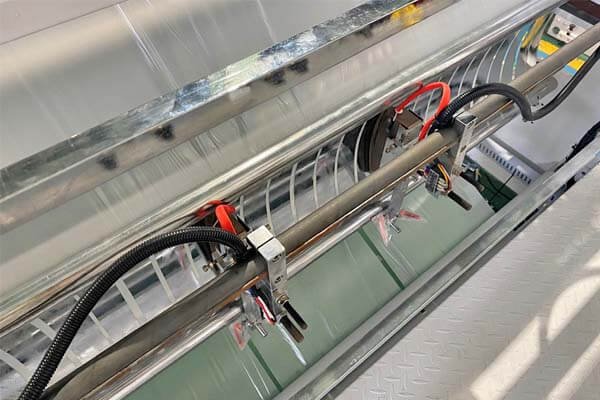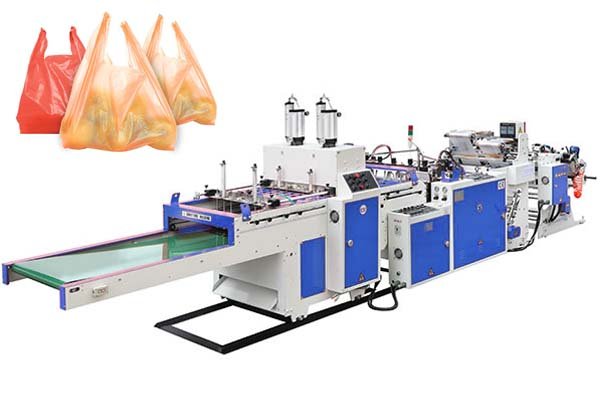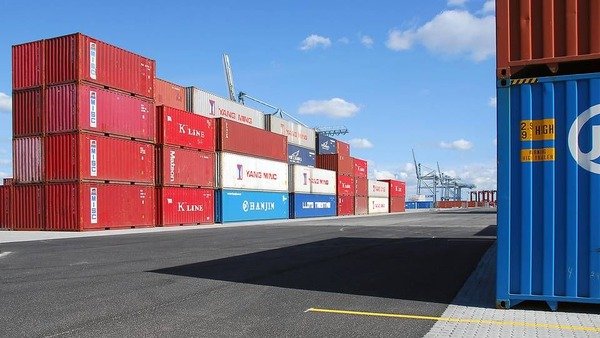
Buying a complex machine from overseas can feel like a big risk. You worry about hidden costs, shipping problems, and what happens if something goes wrong after delivery.
When buying a bag making machine from China, you should focus on four key areas: shipping logistics, customs clearance requirements, technical compatibility like voltage and safety standards, and the quality and accessibility of the manufacturer's after-sales support.
These factors are just as important as the machine's initial price. The total cost of ownership goes far beyond the number on the invoice. It includes the cost to get the machine to your factory, the ease of setting it up, and the long-term support you receive. We have worked with over 500 businesses in 50+ countries. We have seen how overlooking these details can lead to unexpected delays and expenses. A successful purchase is a smooth process from our factory floor to yours.
We will break down each of these critical points. First, your shipping choice impacts both your timeline and your budget. Second, customs can be a major hurdle if you are not prepared with the right documents. Third, a machine with the wrong technical specifications is unusable. Finally, reliable after-sales service is your insurance policy, ensuring your production stays online. We want to help you make an informed decision.
Which Shipping Method to Choose? Pros and Cons of Sea Freight vs. Air Freight
Choosing the right shipping method is a critical decision. It directly affects your initial investment and how soon you can start production. Let's look at the two main options.
Sea freight is the most cost-effective option for heavy machinery but is much slower. Air freight is significantly faster but comes at a much higher cost. The best choice depends on your project's urgency and budget.
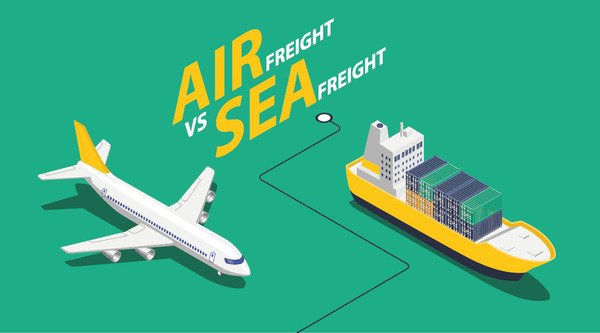
At BagMec®, we handle global logistics every day. We offer a full range of trade terms, including EXW, FOB, CIF, and DDP, to give you complete flexibility. Most of our clients, especially those purchasing large systems like our FFS Bag Machines ($34,000-$48,000) or Wicketer Bread Bag Machines ($69,000-$88,000), choose sea freight. It is the most practical way to transport heavy, bulky equipment. However, for urgent needs, air freight has its place.
A Detailed Comparison
To help you decide, let's look at the specific pros and cons of each method. The right choice often depends on more than just the sticker price.
Sea Freight: The Industry Standard
Sea freight is the backbone of global trade for a reason. It is reliable and has an enormous capacity.
-
Pros:
- Cost-Effective: It is by far the cheapest way to ship large and heavy items. The cost per kilogram is a fraction of air freight.
- High Capacity: A shipping container can easily hold one or more of our large machines, along with spare parts and materials.
- Fewer Restrictions: There are fewer restrictions on materials and item types compared to air freight.
-
Cons:
- Slow Speed: Transit times can range from 20 to 60 days, depending on the destination. Our standard delivery time is 45 days.
- Less Predictable: Port congestion, weather, and customs at sea can lead to delays that are harder to predict than with air travel.
Air Freight: The Fast Solution
When speed is the most important factor, air freight is the answer.
-
Pros:
- Fast: Transit times are measured in days, not weeks. This is ideal for getting a production line running to meet a tight deadline.
- Reliable Timelines: Flight schedules are generally very reliable, with fewer delays due to weather.
- Lower Risk of Damage: Cargo is handled less frequently, which can reduce the risk of damage during transit.
-
Cons:
- Expensive: The cost can be 5 to 10 times higher than sea freight. This is usually only practical for smaller machines like our Patch Handle Bag Machine ($8,500-$15,500) or for urgent spare parts.
- Size and Weight Limits: There are strict limitations on the size and weight of cargo that can be transported by air.
Comparison Table: Sea vs. Air Freight
| Factor | Sea Freight | Air Freight |
|---|---|---|
| Cost | Low | High |
| Speed | Slow (20-60 days) | Fast (3-10 days) |
| Capacity | Very High | Limited |
| Best For | Heavy machines, non-urgent orders | Small machines, urgent parts, tight deadlines |
| Our Recommendation | Standard choice for 95% of our machine orders. | Used for expedited orders or critical component delivery. |
Ultimately, we consult with each client to find the best balance. For a new e-commerce startup in India, like our client Priya Kapoor, managing initial costs was key, so sea freight was the obvious choice. For a high-volume German partner needing a replacement part to avoid downtime, air freight was worth the extra cost.
Is Customs Clearance Complicated? What Documents Should Be Prepared in Advance?
Many customers worry that customs clearance will be a confusing and difficult process. It doesn't have to be. With the right partner and proper preparation, it is a routine step.
Customs clearance is straightforward if you have the correct documents. You will always need a Commercial Invoice, a Packing List, and a Bill of Lading (for sea) or Air Waybill (for air). Your country may also require a Certificate of Origin.
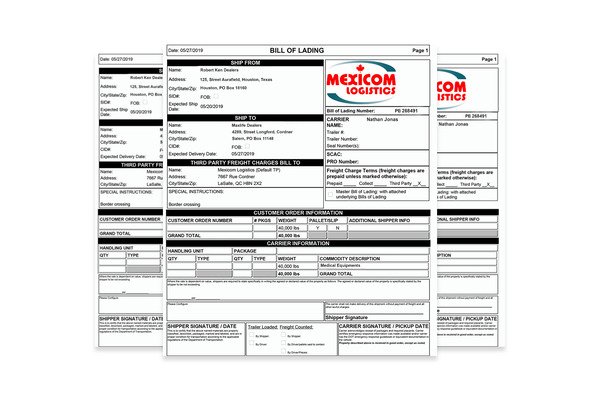
Having shipped over 500 machines to more than 50 countries, we have deep experience with global customs requirements. Our logistics team prepares all necessary documentation meticulously to prevent delays. The key is to have everything in order before the shipment arrives at the port of entry. A missing or incorrect document is the most common reason for a shipment being held by customs.
Getting Your Paperwork Right
Let's break down the essential documents and why they are important. Understanding their purpose will help you see that the process is logical and manageable.
Key Documents and Their Purpose
These three documents form the foundation of any international shipment.
- Commercial Invoice: This is the bill for the goods. It includes a description of the machine, its value, and the terms of sale. Customs officials use this to determine the duties and taxes owed.
- Packing List: This document details the contents of the shipment, including the weight, dimensions, and number of packages. It tells customs exactly what is inside each crate without them having to open everything.
- Bill of Lading (B/L) or Air Waybill (AWB): This is the contract between the owner of the goods and the shipping carrier. It serves as a receipt for the shipment and is required to take possession of the goods at the destination.
Common Additional Documents
Depending on your country's trade agreements and regulations, you may need more paperwork.
| Document | Purpose | Why It's Needed |
|---|---|---|
| Certificate of Origin (CO) | Certifies the country where the goods were manufactured (China). | Required by some countries for tariff calculations or to comply with trade agreements. |
| CE Certificate | Declares conformity with European health, safety, and environmental standards. | Mandatory for machines being imported into the European Economic Area (EEA). |
| ISO 9001 Certificate | Proves the manufacturer follows an internationally recognized quality management system. | Builds trust and may be requested by your finance or quality assurance department. |
How We Prevent Common Problems
Our experience helps us anticipate and prevent a few common issues that can cause delays:
- Incorrect HS Code: The Harmonized System (HS) code is a number that classifies a product for customs. Using the wrong code can lead to incorrect taxes and fines. We ensure the correct code for our machinery is always used.
- Value Discrepancies: The value on the Commercial Invoice must be accurate. We ensure it matches the actual transaction to avoid any accusations of under-declaration.
- Incomplete Descriptions: Vague descriptions like "machinery" are not enough. We provide detailed descriptions, including the model name, like "BagMec® BM-SHJ600 T-Shirt Bag Making Machine," to make the process smooth.
We handle all the paperwork on our end and provide you with a complete digital package. This way, you or your customs broker will have everything needed for a fast and efficient clearance.
Are the Machine’s Voltage and Technical Standards Compatible with Your Country?
A new machine is useless if you cannot plug it in. This seems obvious, but it is a critical detail that must be confirmed before manufacturing begins.
Yes, compatibility is essential. We customize every machine to match your country's specific voltage, frequency, and plug type. We also ensure our machines meet international standards, like CE for Europe, to guarantee safety and compliance.
When a procurement manager like Hans Fischer from Germany orders from us, one of his first questions is about EU standards. When a US client orders, they need a machine that runs on their power grid. We build every machine to order. This means we configure the power supply, motors, and all electrical components to your specific local requirements. This is a standard part of our 5-stage inspection protocol.
Ensuring a Perfect Technical Match
Let's explore why this is so important and how we guarantee a perfect match for your factory.
Why Voltage and Frequency Are Critical
Power grids around the world are not the same. The two main factors are:
- Voltage (V): This is the electrical potential. Common standards are 110-120V or 220-240V.
- Frequency (Hz): This is the rate at which the current changes direction. The two standards are 50 Hz and 60 Hz.
Connecting a machine built for one standard to another can destroy its electrical components, including the expensive servo motors that we use for energy efficiency.
Example Power Standards Around the World
| Region / Country | Voltage | Frequency | Plug Types |
|---|---|---|---|
| North America (USA, Canada, Mexico) | 120V / 240V | 60 Hz | A, B |
| Europe (Germany, France, UK) | 230V | 50 Hz | C, F, G |
| India | 230V | 50 Hz | C, D, M |
| Australia / New Zealand | 230V | 50 Hz | I |
| South America (Brazil, Argentina) | 127V / 220V | 60 Hz | C, N, I |
Our Commitment to Global Standards
Beyond power compatibility, we build our machines to meet strict international quality and safety benchmarks.
- CE Compliance: This is a mandatory certification for the European market. It means our machines have been assessed to meet high safety, health, and environmental protection requirements. This was a key factor for our German packaging client, who needed to meet strict EU regulations.
- ISO 9001 Quality Management: Our factory is ISO 9001 certified. This means we have a proven system for maintaining the highest quality standards, from sourcing raw materials like high-carbon steel to the final 72-hour continuous operation stress test.
- Energy-efficient Design: Our patented "Smart Tension Control" and energy-saving servo motors not only meet standards but also reduce your operating costs by up to 30%.
During our pre-production consultation, we provide a technical specifications sheet for your approval. This document locks in the voltage, frequency, plug type, and any other country-specific requirements. This simple step eliminates any risk of incompatibility.
How Is After-Sales Service Handled? On-Site Installation, Remote Support, or Video Tutorials?
Your journey with us does not end after the machine is delivered. A strong partnership is defined by the support you receive long after the sale. We know that uptime is everything in your business.
We provide a flexible, multi-layered after-sales service. This includes optional on-site installation by our engineers, 24/7 remote technical support via video, and comprehensive video tutorials. Our advanced machines also feature IoT for remote diagnostics.

We believe in providing support that fits your needs and budget. For a complex, fully automated FFS bag machine line, on-site installation might be the best choice. For a simple setup or a minor troubleshooting issue, immediate remote support is more efficient. For a client like Carlos Mendez in Mexico who needs an aseptic diaper bag machine, the combination of on-site sterile setup and remote diagnostics offers complete peace of mind.
Your Support, Your Way
We have structured our support system to be as flexible and responsive as possible. Let's look at the different levels of service you can expect from BagMec®.
Option 1: On-Site Installation and Training
For large-scale projects or for customers who want a completely hands-off setup, we dispatch our own engineers to your facility.
- What it includes:
- Professional machine assembly and commissioning.
- Calibration and testing with your specific film materials.
- Hands-on training for your operators and maintenance staff.
- A full operational handover to ensure your team is confident.
- Best for: Complex machines like our Lamination Pouch Machine or setting up a full production line.
Option 2: Remote Support and Video Guidance
Technology allows us to be in your factory virtually, anytime you need us.
- What it includes:
- 24/7 access to our technical team via live video calls (WhatsApp, Zoom, etc.).
- Step-by-step guidance for installation, setup, or troubleshooting.
- A library of detailed video tutorials covering routine maintenance and common adjustments.
- Best for: Simple machine setups, quick troubleshooting, and ongoing operational questions. This is a very popular and cost-effective option.
Option 3: Future-Ready IoT and Predictive Maintenance
Our most advanced machines are IoT-enabled. This is a game-changer for service.
- What it includes:
- Remote Diagnostics: We can securely access your machine's operating data (with your permission) to diagnose problems without having to be on-site.
- Predictive Maintenance: The system can alert you before a component fails, allowing you to schedule maintenance proactively and avoid unplanned downtime.
- Software Updates: We can push updates remotely to improve performance or add new features.
- Best for: Businesses focused on maximizing uptime and leveraging Industry 4.0 technology.
Spare Parts and Warranty
Every BagMec® machine comes with a comprehensive warranty. We use durable, high-carbon steel components to minimize issues, but if a part is needed, our system is built for speed. We maintain a stock of all critical components and can ship them via Express Air to anywhere in the world, minimizing your downtime.
Conclusion
Buying a bag making machine from China is a major decision. Success depends on looking beyond the initial price. By focusing on shipping, customs, technical standards, and after-sales support, you can ensure a smooth, predictable, and profitable investment. We are here to guide you.




